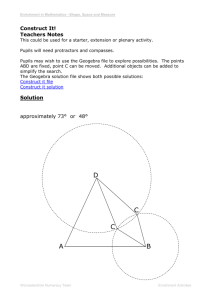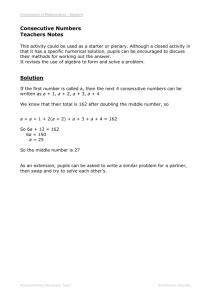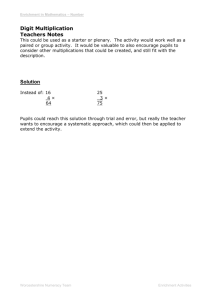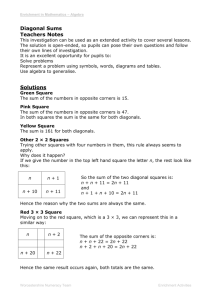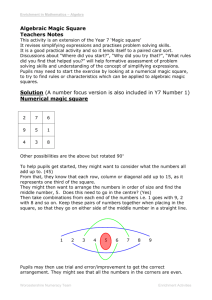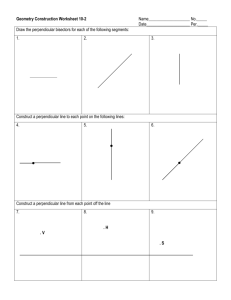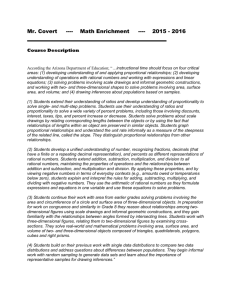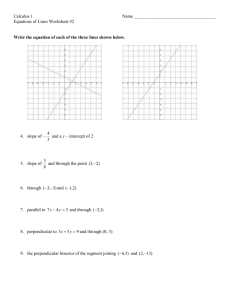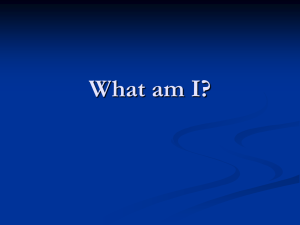Parallel Squares (Y9 SSM1)
advertisement
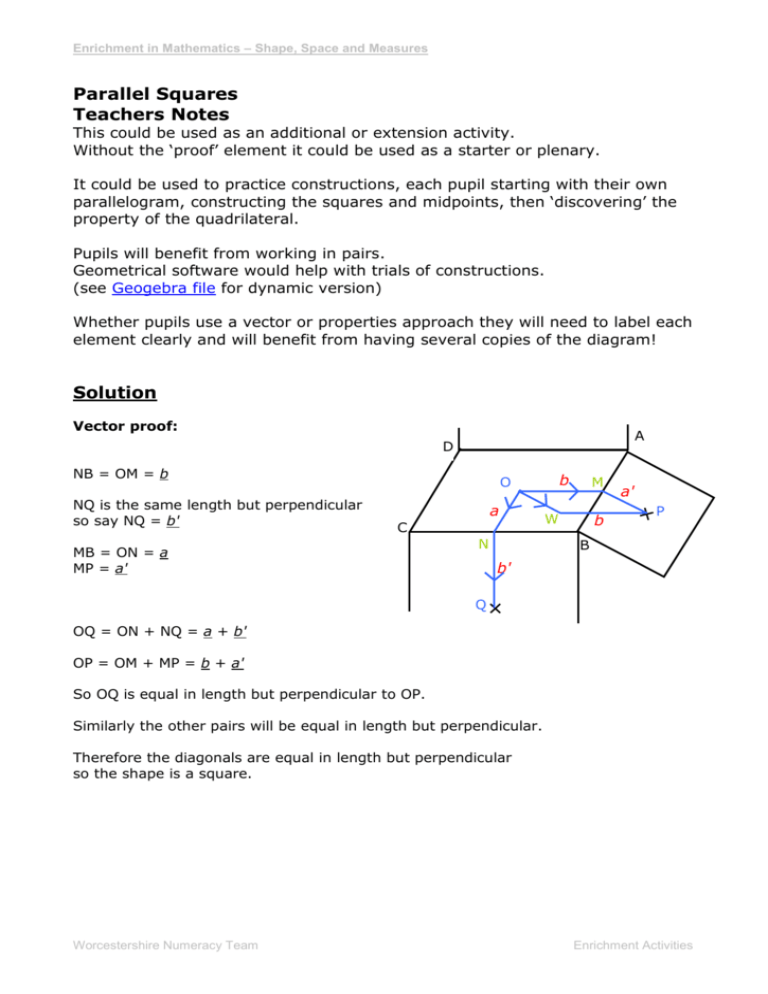
Enrichment in Mathematics – Shape, Space and Measures Parallel Squares Teachers Notes This could be used as an additional or extension activity. Without the ‘proof’ element it could be used as a starter or plenary. It could be used to practice constructions, each pupil starting with their own parallelogram, constructing the squares and midpoints, then ‘discovering’ the property of the quadrilateral. Pupils will benefit from working in pairs. Geometrical software would help with trials of constructions. (see Geogebra file for dynamic version) Whether pupils use a vector or properties approach they will need to label each element clearly and will benefit from having several copies of the diagram! Solution Vector proof: A D NB = OM = b NQ is the same length but perpendicular so say NQ = b' b O a C MB = ON = a MP = a' N M W b a' P B b' Q OQ = ON + NQ = a + b' OP = OM + MP = b + a' So OQ is equal in length but perpendicular to OP. Similarly the other pairs will be equal in length but perpendicular. Therefore the diagonals are equal in length but perpendicular so the shape is a square. Worcestershire Numeracy Team Enrichment Activities Enrichment in Mathematics – Shape, Space and Measures Geometric proof: x ½x ½p x p ½x ½q q ½x Diagonal top to bottom = √[(½x+p+½x) ²+q²] = √[(x+p) ²+q²] Diagonal left to right = √[(½p+x+½p) ²+(½q+ ½q²] = √[(x+p) ²+q²] Diagonals equal in length, so must be a square or a rectangle. ½q ½x ½p ½x ½p ½q Angle of blue diagonal to vertical: ½q ½x + ½p Angle of green diagonal to horizontal: ½x+½p ½q So diagonals are perpendicular, so shape must be a square. Worcestershire Numeracy Team Enrichment Activities Enrichment in Mathematics – Shape, Space and Measures Parallel Squares Draw a parallelogram. Draw squares on each edge. Join the centres of the four squares. What do you know about this quadrilateral? Worcestershire Numeracy Team Enrichment Activities
